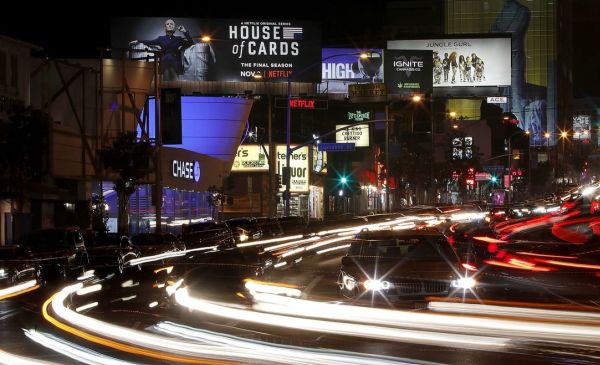

It may surprise you to learn that outdoor and digital out of home are booming. And before you laugh, research conducted by Outdoor Advertising Association of America shows that every dollar spent on out of home ads delivers $5.97 in ROI. Outdoor ads were the only traditional media category to show growth this year, hitting an estimated $33.5 billion in revenue.
Many brands are chasing after infinite personalization in their marketing: They hyper-target based on any number of online behaviors the big tech firms have available; they show them ads they think will mean something to them; and they plan for this entire experience to be contained on their smart phone or computer. It’s an entirely private and personal experience.
As Patrick Sisson shares on Curbed, “Ad targeting, mobile technology, and ad-supported online media mean most of the industry’s audience is buried in their smartphones, clicking past banner displays and skipping pre-roll commercials. But real life has no skipping or ad-blocking. In a world with an abundance of screens, large, uncluttered, mostly static images still have the power to grab our attention. Factor in location and contextual area data, industry advocates say, and you have ads with actual relevance to people’s daily life. Today, four of the 10 largest spenders on billboards are tech firms (Apple, Google, Amazon, and Netflix).”
In fact, Netflix’s outdoor strategy was brilliant. In order to attract the talent needed to sustain its massive content production business, instead of using all of their phenomenal data to create a deeply personal and targeted digital experience, they did a $150 million billboard buy on Hollywood’s Sunset Strip. As Nancy Fletcher writes in Adweek, “In the entertainment capital of the world — where your waitress could be producing a movie — Netflix chose to buy billboards.” It makes sense. Billboards are big, and Netflix knows how to design them well. And massive ads, placed on the same street corner that your target audience walks by every day, have the power to make us look up from our phones.
The Power Of Common Knowledge
One of the reasons outdoor and billboards can be so effective at building brands is because they maximize the principle of common knowledge. For a thing to be common knowledge its not enough for a person to know the information…they must know that other people also know the same information. This is antithetical to the online world of hyper-targeted, hyper-personalized. So, when Apple takes over significant space to talk about the revolutionary innovation for their latest product release, it’s reasonable to believe that we all share in that common knowledge, because we’ve all seen the same ad. It even works in B2B. Amazon’s cloud services AWS is famous for substantial outdoor buys.
Digital out-of-home (DOOH) is also booming and can provide more cost-effective access for smaller brands. According to PricewaterhouseCoopers, spending is up 35% since 2010. In New York, the Link network runs hundreds of smart kiosks and digital billboards. Jen Hensley, Link’s president, says, “These screens are in a fixed physical location, on a specific street or corner, and around a certain transit access point, which lets us surface information people want and need at that station at that time.” Such as top lunch spots nearby, when people are in the context of searching for lunch.
Ultimately, outdoor ads believe they can cut through the clutter of today’s digital noise. Does outdoor make you look up from your phone?
The Blake Project Can Help: The Strategic Brand Storytelling Workshop
Branding Strategy Insider is a service of The Blake Project: A strategic brand consultancy specializing in Brand Research, Brand Strategy, Brand Growth and Brand Education

